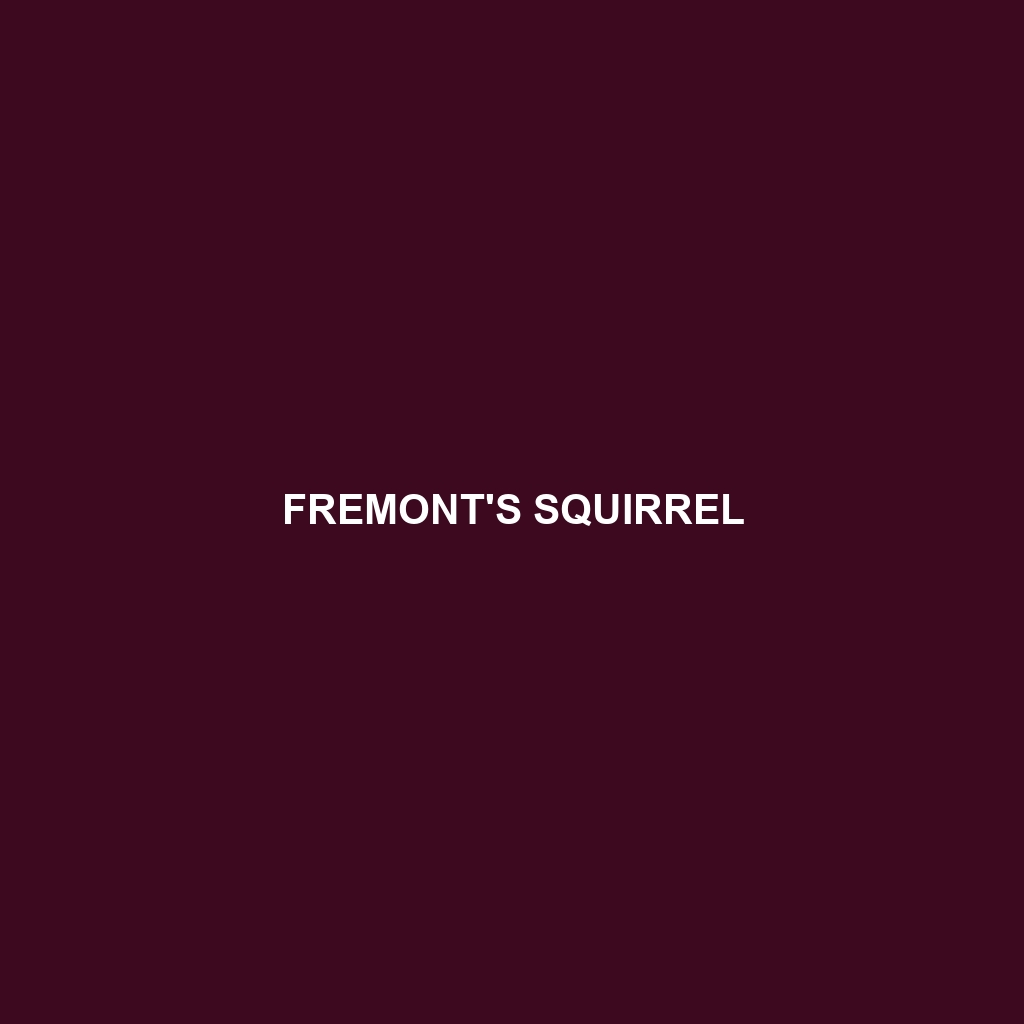Description of Fremont’s Squirrel
Common Name: Fremont’s Squirrel
Scientific Name: Callospermophilus fremonti
Habitat: Fremont’s Squirrel is primarily found in the western United States, particularly in the Sierra Nevada mountains of California and Nevada. These squirrels thrive in mixed conifer forests, grasslands, and scrubland areas, often near streams and meadows. Their preferred habitats include regions with ample tree cover and a rich understory for foraging.
Physical Characteristics: Fremont’s Squirrel typically measures about 12 to 16 inches in length, including their bushy tail. They have a distinctive coat that is generally grayish-brown with lighter underbellies. Their fur can appear somewhat rusty or golden during the summer months, which can aid in camouflage. Unique features include large, prominent eyes and small, rounded ears, contributing to their distinct appearance.
Behavior: Fremont’s Squirrel is known for its active and social behavior. They are diurnal, primarily foraging for food during daylight hours and often seen engaging in playful activities. These squirrels are adept climbers and often use trees as vantage points to watch for predators. They communicate using a variety of vocalizations and body language, particularly during the mating season.
Diet: Fremont’s Squirrel has a varied diet that mainly consists of seeds, nuts, fruits, and insects. They have a particular affinity for acorns and pine nuts, foraging extensively in their habitats. Additionally, they have been observed to engage in caching behavior, where they store food in various locations to sustain themselves during winter months.
Reproduction: The breeding season for Fremont’s Squirrel typically occurs in late winter to early spring. After a gestation period of about 28 to 30 days, female squirrels give birth to litters ranging from 3 to 6 offspring. The young squirrels are born blind and hairless but grow rapidly, becoming independent by late spring or early summer. Maternal care is crucial during the early stages of development.
Conservation Status: Currently, Fremont’s Squirrel is listed as a species of Least Concern, but habitat loss due to urban development and wildfire poses potential risks. Conservation efforts continue to monitor populations and preserve their natural habitats to ensure their ongoing survival.
Interesting Facts: Fremont’s Squirrel is known for its distinctive storage behavior, where it buries food in preparation for winter, demonstrating advanced survival strategies. They have a keen sense of smell, which aids them in locating stored food even beneath several inches of snow.
Role in Ecosystem: Fremont’s Squirrel plays a crucial role in its ecosystem by contributing to seed dispersal, particularly for acorns and other tree seeds. Their foraging helps to maintain forest health and promotes biodiversity. Additionally, they serve as prey for various predators, including hawks and coyotes, thereby contributing to the food web in their natural habitats.
